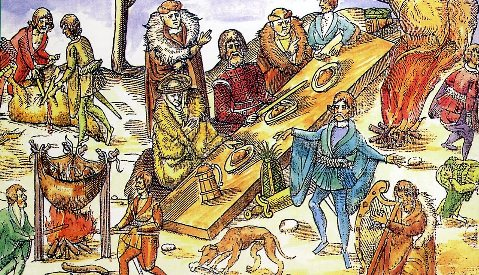Linguistic research on the Indo-European language family has been a cornerstone of historical and archaeological studies, allowing researchers to connect ancient languages with migration and cultural patterns. Within this expansive language family, the Indo-Anatolian hypothesis emerges as a critical sub-theory that suggests that the Anatolian branch, which includes Hittite and Luwian languages, split early from Proto-Indo-European (PIE). This hypothesis reshapes our understanding of language evolution, migration, and the technological developments of ancient civilizations.
Archaeolinguistics has become an essential tool in this interdisciplinary field, marrying linguistic evidence with archaeological findings. One such case is the study of wool and its significance in tracing cultural exchange and technological innovation, particularly in the context of Indo-European-speaking populations and their Anatolian counterparts. Alwin Kloekhorst presented a paper on the Indo-Anatolian hypothesis on October 5 and 6, 2023, using the linguistic evidence surrounding the word "wool" as its main focus.
The Domestication of Sheep and the Rise of Wool Production
The domestication of sheep, dating back to around 8000 BCE in Mesopotamia, plays a vital role in understanding early human economies. Initially, sheep were primarily valued for their meat, milk, and skins. However, by the 6th to 4th millennia BCE, selective breeding led to the emergence of woolly sheep, particularly in regions like Iran. Wool, as a product, revolutionized textile production, and its spread across regions provides critical insights into the technological advancements of ancient cultures.
By the early 3rd millennium BCE, wool production had reached northern Mesopotamia, and there is evidence of woolly sheep dispersal towards the steppes. These developments parallel the spread of Indo-European languages, raising questions about the interconnectedness of linguistic and technological diffusion.
Wool in Anatolian Languages A Linguistic Perspective
In the context of Indo-European languages, wool holds linguistic significance as well. In Hittite, the word for wool appears in various forms, such as the widespread use of the Sumerogram SÍG. Through textual evidence, we see that Hittite used the term "SÍG" for wool, indicating that the knowledge of wool production and weaving was well-established in the Anatolian region.
Interestingly, linguistic analysis shows two distinct stems in the Hittite language for wool: ḫulii̯a- and ḫulan(a)-. Both forms, while indicating wool, exhibit different grammatical usages and highlight how linguistic evolution can track technological innovations, like wool production, in ancient cultures. The suffixes -ii̯a- and -āli- are common Indo-European nominal endings, while -ana- presents an anomaly, showcasing potential inner-Anatolian developments.
Comparative Indo-European Linguistics and the Etymology of Wool
The study of wool across Indo-European languages reveals deep-rooted connections. The word for wool appears in various Indo-European languages, such as:
Sanskrit: ū́rṇā
Ancient Greek: λῆνος
Latin: lāna
Old Church Slavonic: vlъna
Lithuanian: vìlna
Gothic: wulla
These terms trace their origins to the Proto-Indo-European root h2ulh1n(e)h2-, as proposed by researchers like Peters (1980). However, the Anatolian forms present problems when compared with other Indo-European languages. In particular, Proto-Indo-European h2ulh1n(e)h2- does not yield the expected forms in Anatolian, prompting further inquiry into whether these divergences support the Indo-Anatolian hypothesis.
Issues with Etymological Comparisons
One significant issue arises when comparing the Anatolian word for wool with the equivalent terms in other Indo-European languages. Proto-Indo-European consonant clusters, such as Ch1C, usually do not simplify into forms like CaC in Anatolian languages. This divergence is exemplified in the difference between the Proto-Indo-European h2ulh1n(e)h2- and the Hittite form ḫulana-, suggesting an intermediate stage like ḫulna- with an added anaptyctic vowel to preserve phonetic integrity.
Additionally, another issue lies in the absence of h2- in Greek forms like λῆνος and λείνα, complicating efforts to reconcile the Greek and Anatolian data. The Greek evolution seems to imply an older, perhaps Pre-Greek form, while the Anatolian word for wool appears to have developed along a separate trajectory, further supporting the idea of early Anatolian divergence.
Conclusion: Reconsidering the Indo-Anatolian Hypothesis through Wool
The research presented by Alwin Kloekhorst challenges long-held assumptions regarding the presence of a common Proto-Indo-European (PIE) term for wool across the Indo-Anatolian languages. The conclusion that the lexeme h₂ulh₁n(e)h₂- for ‘wool’ likely never existed within PIE forces a reevaluation of how the Indo-Anatolian languages developed in relation to wool-related vocabulary. In particular, the Anatolian word ḫulan-, which refers to wool, appears to be independent of the late PIE term, suggesting that the Anatolian branch diverged early from the rest of the PIE family, long before the spread of wool technology across Eurasia.
Furthermore, the PIE term ulh₁n(e)h₂- seems to have been created later, in the post-Tocharian PIE era, around 2700 BCE. This period aligns with the introduction of wool production to the Pontic steppes, indicating that language adapted alongside technological advancements. The evidence supports the idea that the spread of wool and its associated terminology was not a universal phenomenon across all Indo-European languages but rather emerged as wool became a vital resource in specific regions.
Lastly, the root hul-, found in Anatolian languages, could be a borrowing from external sources, such as Hurrian. This borrowing emphasizes the complexity of linguistic evolution and the significant cultural exchanges between ancient peoples. By integrating linguistic evidence with archaeological data, Kloekhorst’s conclusions offer a more nuanced understanding of the development of wool production and its terminology, illustrating that the linguistic divergences in Anatolia better align with the archaeological timeline of wool's spread than previous theories suggested.











